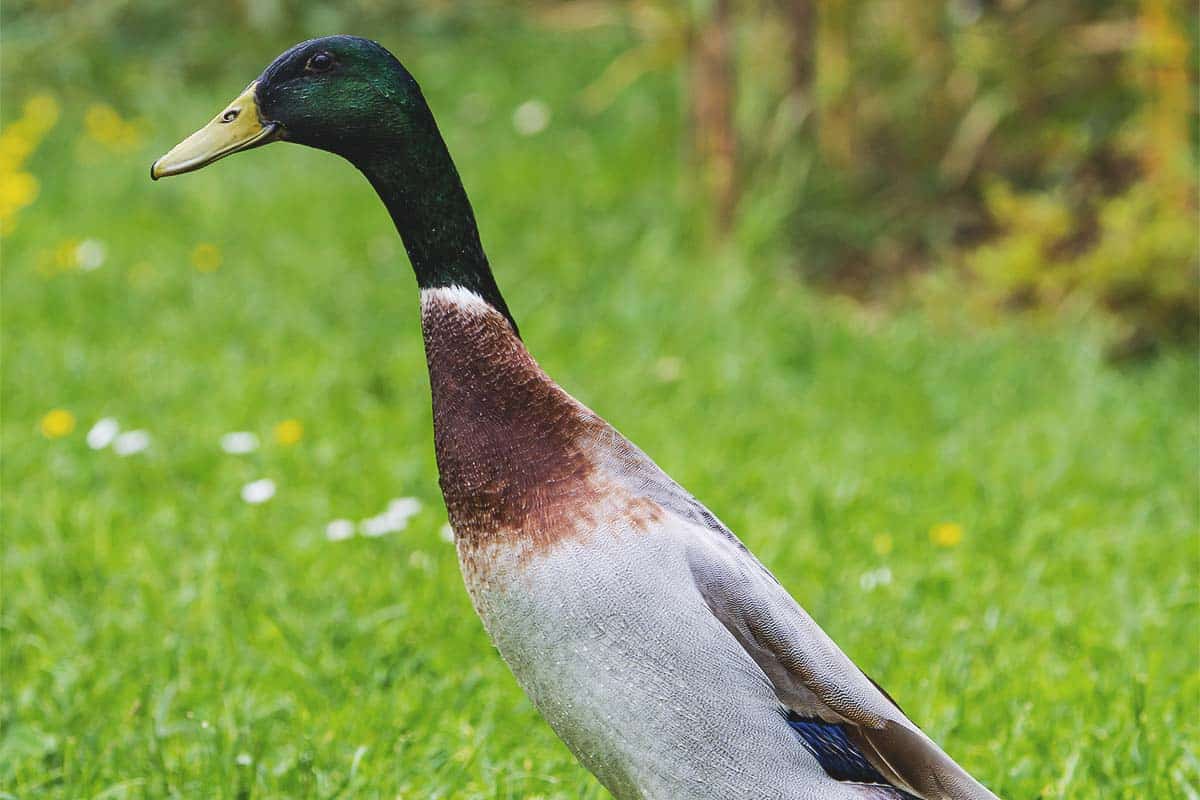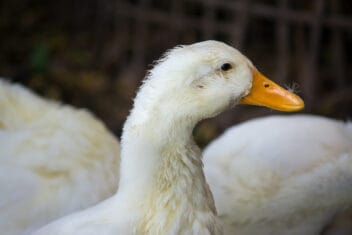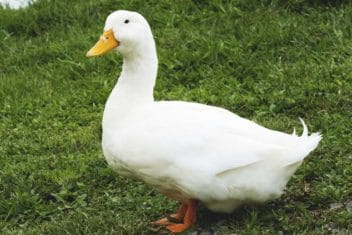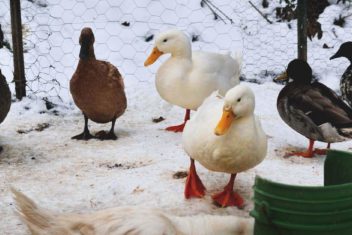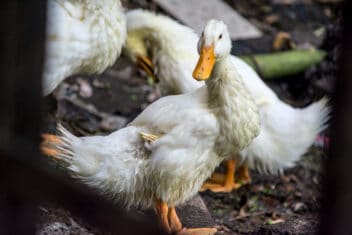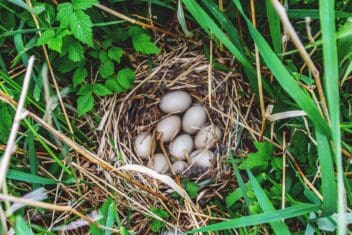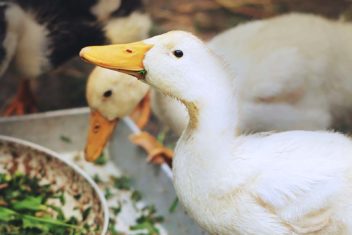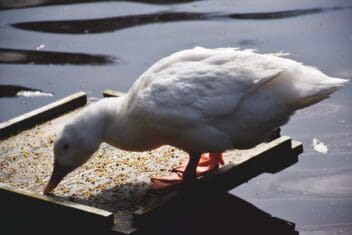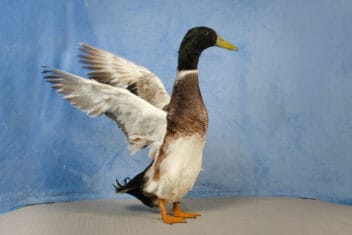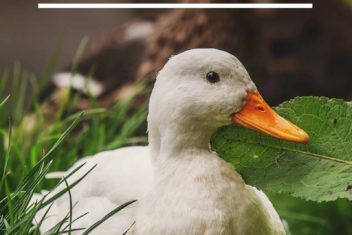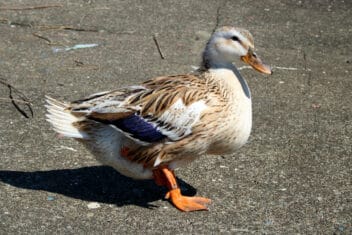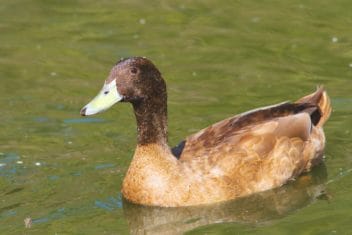Indian Runner ducks are unique birds that stand out in a crowd. This duck stands unusually tall, often towering over the rest of the flock.
These unusual creatures are usually kept for their unique appearance and outstanding egg production. Another reason Indian Runner ducks are so widely loved is because of their multiple color varieties.

About Indian Runner Ducks
This fun and functional duck breed originated in the East Indies hundreds of years ago and has since become quite popular. According to Japanese cave paintings, Indian Runner ducks could have even been around for thousands of years.
Needless to say, this breed likely has quite a bit of untold and interesting history. Throughout the years, Runner ducks have played a part in breeding other well-known duck varieties, such as the Khaki Campbell.
If you’re considering having Indian Runner ducks, you have several different color options to choose from. Eight different color varieties have been accepted into the American Poultry Association, such as Black, Blue, Buff, Chocolate, Cumberland Blue, Fawn & White, Gray, Penciled, and White.
Indian Runner Duck Characteristics
1. Temperament
All ducks are sociable, but Indian Runner ducks are especially sociable animals that do well with other ducks in their flock. On very rare occasions, Indian Runner hens will go broody, but it’s not very likely that they will do so.
As far as interacting with people goes, these ducks aren’t naturally the friendliest birds in the world. However, with frequent interaction, you will have a duck so calm and docile that you could show it at the fair.
2. Size and Weight
Regarding the size of these peculiar looking birds, they aren’t the biggest ducks around. A fully grown and healthy Indian Runner duck should weigh anywhere between 4 & 5-pounds. The majority of your Runner ducks will likely tip the scales around 4.5-pounds.
3. Egg Production
The egg production that these lovely birds sport is unlike any other. For anyone who wants an abundant amount of duck eggs, this is definitely the breed for you. A healthy Indian Runner duck hen will lay between 250 and 325 eggs in a single calendar year.
Indian Runner hens don’t really care much about where they lay their eggs, so it’s usually best to keep the hens confined in the early morning to make sure you can find their eggs before you let them out to range.
4. Meat Production
While there are duck breeds that are specifically bred to be a dual-purpose or just for meat production, Indian Runner ducks aren’t one of them. These small ducks are excellent egg producers, but the same cannot be said for their meat production qualities.
Caring For Indian Runner Ducks
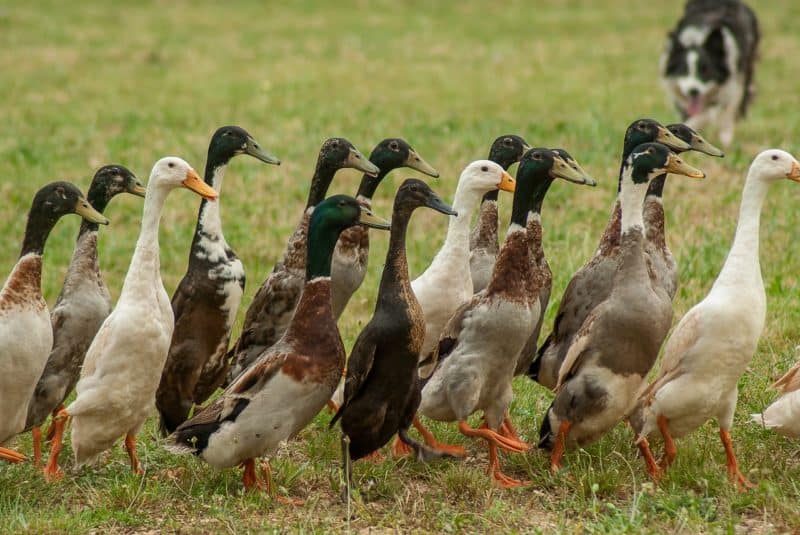
1. Feeding and Nutrition
For those who are raising Indian Runner ducklings, you’ll have to ensure that you start them out with the proper food. Ducklings can be sensitive to what they ingest, so ensuring that you feed them properly is crucial.
Waterfowl starter crumbles or flock raiser crumbles are the ideal feed for new ducklings. For some reason, not every feed store carries waterfowl starter crumbles or flock raiser crumbles, so you may need to feed them chick starter. The biggest difference between waterfowl starter and chick starter is the levels of Niacin or B3 in the feed.
Growing ducklings require higher levels of Niacin than chicks, otherwise, they will grow up with severe vitamin deficiencies. It is possible to feed ducklings a chick starter as long as it is always an unmedicated chick starter.
When feeding chick starter to ducklings, mix in brewer’s yeast at a ratio of 1 tablespoon to a cup of feed. As part of your essentials, always make sure to keep brewer’s yeast on hand when raising ducklings. Ducklings can quickly get sick and die due to B3 deficiencies and brewer’s yeast usually turns them around just as quickly.
Once your Indian Runners are fully matured, they’ll perform best on flock raiser pellets for both egg-laying and general health. If you have a mixed flock of ducks and chickens, ducks also do just fine on a chicken’s laying feed.
Always feed your ducks near their water because ducks can easily choke if they are unable to eat and drink at the same time.
2. Housing and Fencing
Duck houses need to be near the ground because ducks can have a hard time navigating ramps for raised coops. Your duck coop does not need to have roosts or nesting boxes because ducks prefer to do all their business on the ground. Make sure to provide a corner with clean bedding where your ducks will lay their eggs.
Inside the coop, provide a minimum of 5-6 square feet per duck. Outside in the run, 12-15 square feet per bird is important to make sure your ducks have plenty of room for flapping their wings and milling around.
3. Health and Care
It is important to the health of a duck that they have water to fully submerge themselves in. Water sources such as ponds or springs are always greatly appreciated by any duck. However, a large container of water such as a kiddie pool that is easy to get in and out of will work fine if you don’t have anything else for your ducks.
Other than their water requirements, which shouldn’t come as a surprise to anyone with knowledge on ducks, Indian Runners are fairly low maintenance. Always observe your flock for anything out of the ordinary to help you pick up on any issues before they get out of hand and spread to the entire flock.
4. Breeding
When selecting Indian Runner ducks for breeding, there are many traits and physical aspects of a duck that will make it ideal for breeding stock. You’ll want to pick birds that carry the classic, upright runner duck stance and avoid any ducks with a low body stance.
It’s also ideal to avoid using ducks with overly short bills and tails that are always cocked upwards. Always pick ducks with the best foraging and laying abilities to make sure you have future generations of well-rounded birds.
Breed Alternatives
1. Khaki Campbells
Khaki Campbell ducks actually have some Runner duck blood in them, which makes them the perfect alternative to Indian Runners. This duck doesn’t have quite the upright stance that Runners do, but they are excellent egg producers and do very well on any homestead.
Did You Know?
Indian Runner ducklings are considered to be some of the most active ducklings you’ll ever encounter. Many breeders report ducklings that seem to have an affinity of jumping out of incubator trays and being quite active in the brooder. Indian Runner ducks are no doubt a very active breed from hatch through adulthood.
Whether you’re looking for a good starter duck or a breed to expand the diversity of your flock, Indian Runner ducks will make a perfect addition to any flock and farm.
